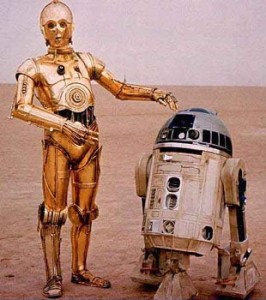By Joe Moore
Along with plot, setting, dialog, theme, and premise, your story is made up of characters. Hopefully, they’re interesting and believable. If they’re not, here are a few tips on making them so.
It’s important to think of your characters as having a life prior to the story starting, and unless you kill them off, also having a life beyond the last page. You need to know your character’s history. This doesn’t mean you have to explain every detail to the reader, but as the author, you must know it. Humans are creatures molded by our past lives. There’s no difference with your fictional characters. The more you know about them, the more you’ll know how they will react under different circumstances and levels of pressure.
 The reader doesn’t need to know everyone’s resume and pedigree, but those things that happened to a character prior to the start of the story will help justify their actions and reactions. For instance, a child who fell down a mine shaft and remained in the darkness of that terrible place for days until rescued could, as an adult, harbor a deep fear of cramped dark places when it comes time to escape from one in your story. Why does Indiana Jones stare down into the ancient ruins and hesitate to proceed when he says, “I hate snakes.” We know because he had a frightening encounter with snakes as a youth. But the background info must be dished out to the reader in small doses in order to avoid the dreaded “info dump”. Keep the reader on a need-to-know basis.
The reader doesn’t need to know everyone’s resume and pedigree, but those things that happened to a character prior to the start of the story will help justify their actions and reactions. For instance, a child who fell down a mine shaft and remained in the darkness of that terrible place for days until rescued could, as an adult, harbor a deep fear of cramped dark places when it comes time to escape from one in your story. Why does Indiana Jones stare down into the ancient ruins and hesitate to proceed when he says, “I hate snakes.” We know because he had a frightening encounter with snakes as a youth. But the background info must be dished out to the reader in small doses in order to avoid the dreaded “info dump”. Keep the reader on a need-to-know basis.
Next, realize that your characters drive your plot. If a particular character was taken out of the story, how would the plot change? Does a character add conflict? Conflict is the fuel of the story. Without it, the fire goes out.
Also remember to allow the reader to do a lot of the heavy lifting by building the characters in their mind. Give just enough information to let them form a picture that’s consistent with your intentions. The character they build in their imagination will be much stronger that the one you tried to over-explain. Telling the reader how to think dilutes your story and its strength. Don’t explain a character’s motives or feelings. Let the reader come to their own conclusion based upon the character’s actions and reactions.
Avoid characters of convenience or messengers. By that I mean, don’t bring a character on stage purely to give out information. Make your characters earn their keep by taking part in the story, not just telling the story.
Challenge your characters. Push them just beyond their preset boundaries. Make them question their beliefs and judgment. There’s no place for warm and cozy in a compelling story. Never let them get in a comfort zone. Always keep it just out of their reach.
And finally, make your characters interesting. Place contradictions in their lives that show two sides to their personality such as a philosophy professor that loves soap operas or a minister with a secret gambling addiction. Turn them into multi-faceted human beings in whom the reader can relate. Without strong characters, a great plots fall flat.
So what has this all got to do with building a better robot? Even if you write science fiction or fantasy and your characters are robots or trolls, the memorable ones are those with strong human traits. Think r2d2 and C-3PO.

Great post, Joe. Saviors coming out of nowhere and messengers are definite no-nos. And what you can say about characters is best shown. One “I HATE snakes: is worth far more than “When I was twelve I spent the night in a well, trading places with a rattlesnake.”
It is all too easy to tell too much about a character too fast.
Solid advice, Joe. In addition to all that, I like to have a visual and audio of my characters. If I can see them (I find a picture in a magazine or online) and hear them (I do a “voice journal”) they automatically start to come to life for me, and begin to suggest their backstory.
Thanks, John. We’ve heard “show, don’t tell” a million times, but the fact is, it’s great advice.
Jim, finding a picture in a magazine and pasting it near your PC is a great way to visualize your characters with just a glance. Good tip.